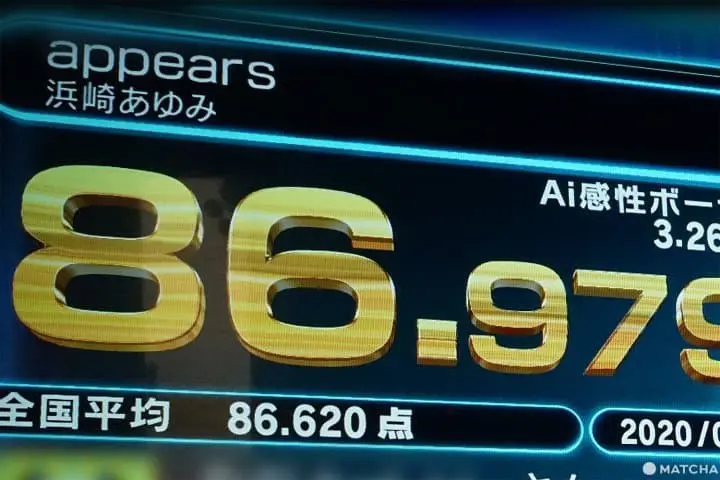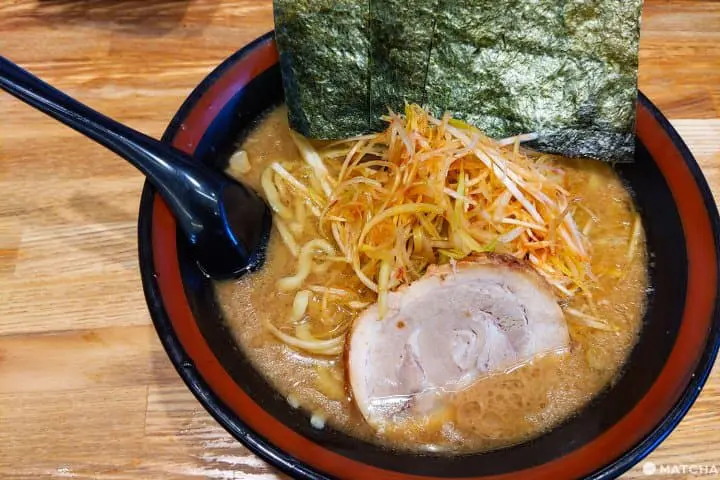Solo Karaoke And Tonkotsu Ramen! A Day Off With MATCHA's Thai Editor

Despite admitting he isn't great at karaoke, one of the Thai editors from MATCHA goes singing at least once a week. Find out more about the unique weekend routine--karaoke and soy sauce tonkotsu ramen--of an international resident in Japan!
How Do International Residents in Japan Spend Their Time Off?
Millions of people are familiar with karaoke and have slurped a satisfying bowl of ramen. You’ll see countless karaoke establishments and ramen restaurants in Japan. It's not a stretch to say that both are firmly rooted in Japanese culture.
Ramen was originally introduced from China, but the Japanese have put their own spin on this noodle dish. For me, an editor from Thailand who has lived in Japan for six years, these two customs are the ideal form of relaxation–like an oasis in a barren desert.
Karaoke: Experience Another Dimension within a Private Room

While living in Thailand, I rarely enjoyed karaoke. I disliked hearing my own voice and would always sing off-key. Even when invited out by friends, I would often just take on the role of livening up the party. After coming to Japan, however, I've become hooked and go singing at least once a week.

The word “karaoke” comes from kara-okesutora. Kara is the Japanese word for "empty," while okesutora comes from the Japanese pronunciation of "orchestra," the musical accompaniment.
Karaoke became the abbreviated name. This shortening of words is common in Japanese. For example, the beloved franchise Pokémon is an abbreviation of “Pocket Monster.”

There are several theories about the origins of karaoke. For example, not long ago, live accompaniments by an ensemble were required for music programs on television, which resulted in high-performance fees. To tackle this issue, musical compositions were soon recorded beforehand without the singer's vocals. The artist would then sing along to the instrumental tracks being played, thus creating an orchestral performance without vocals (empty orchestra).
It wasn't long before companies manufacturing karaoke machines and microphones began popping up. These machines were placed in restaurants for customers to sing. That public format then transformed into present-day private karaoke booths in Japan.

There are a lot of things that make karaoke in Japan more enjoyable than it is in Thailand. For example, you can add an applause sound effect when your friends are singing. There are even effects that alter your voice into a male, female, or an alien. Karaoke-goers can get scores, have a pitch guide, and log in their favorite songs. Those with a competitive streak can battle for high ranks against friends and other users nationwide.
The scoring feature gives patrons an indication of how well they can sing, giving them the motivation to earn a higher score next time. Thanks to the pitch guide, I've slightly improved from being tone-deaf.

The drink bar—an all-you-can-drink self-service—is another attractive feature found at karaoke establishments and family restaurants. The soft drink menu includes cola, carbonated beverages, Calpis (a delicious sweet milky drink), hot coffee, and tea brewed with teabags. Sometimes you can find warm corn soup, which is perfect if you want to warm up your throat.
Some karaoke chains like Manekineko allow guests to bring food from outside. Any food without a pungent smell is acceptable. I often bring in a hamburger inside the booth. Ordering food off the karaoke establishment’s menu is another option. Dishes include takoyaki (fried octopus balls), pasta, French fries, and katsu curry (pork cutlets over curry rice).

To many Japanese, karaoke is a place to sing loudly and let off steam from everyday stress. It's also a fun activity to enjoy with friends. The MATCHA editorial department has gone to the karaoke in the past and everyone was fabulous!
It's common for each person to select a song first. When their turn comes, they will sing the melody while others belt the harmony. This is the same in Thailand. However, I learned from a Japanese friend living in Australia that everyone sings the melody in unison—regardless of who selected the song.
How do you sing karaoke?

I feel like I'm in another world when spending hours in a karaoke room. It's nice to just focus on a song without worrying about other things. I would say it's similar to meditation.
After singing my heart out, I usually go out for ramen.
Fall in Love with the Aroma! Soy Sauce-Based Tonkotsu Ramen
Foreigners living in Japan are often asked what their favorite Japanese food is.
I only have one answer for the countless times I was asked this question: ramen from Seiya. Soy sauce-based tonkotsu (pork broth) ramen, to be exact. You might get teased and told, "Ramen isn’t really a Japanese food!” That’s alright because present-day ramen is a uniquely Japanese dish.

I first had ramen at Seiya in 2008 when I came as an exchange student in Japan. Back then, "Hachiban Ramen" was the main type of ramen known in Thailand. I was familiar with basic ramen flavors like shoyu (soy sauce), miso, shio (salt), and tonkotsu (pork broth). Although the flavors were light and delicious, I wasn't really captivated by the noodle soup.
When I visited Seiya, though, and slurped a mouthful of ramen soup, the aromatic pork bone broth was so delicious! It is a one-of-a-kind flavor and reasonably priced. A bowl of ramen at other restaurants costs over 700 to 800 yen. However, a bowl here is an astonishing 500 yen!

While studying in Japan, I used to frequent Seiya Kamata near my language school. After my first visit, I began experimenting with ramen toppings. Pictured above is an extra-large serving of ramen with a mound of green onions. That was my first encounter with shiraga negi (the white part of an onion julienned into strips).
Shiraga negi is a term that combines the words white hair (shiraga) and negi (green onions). You’ll understand why it was given this name after looking at the picture: the long green onions are cut finely into strips that look like white hairs. At Seiya, they add cayenne peppers to bring out its sharp flavor. Since eating this dish, I can only order the "Negi Ramen."

While the normal noodles are thick, they can be substituted for thin noodles. Personally, I recommend the thick noodles as they’re easier to eat.
What’s amazing about tonkotsu shoyu ramen restaurants like Seiya is the fact that you can customize the flavor to your liking!
Flavor (Aji):
Light (Usume), Normal (Futsu), Heavy (Koime)
Oil (Abura):
Light (Sukuname), Normal (Futsu), Heavy (Ome)
Noodles (Men):
Tender (Yawarakame), Normal (Futsu), Firm (Katame)
If you don’t order any customizations, your ramen will be served "normal" by default in all categories.

Seiya Ramen's Shimosa-Nakayama Store
In fact, the tonkotsu shoyu base broth was invented at Yoshimuraya in Yokohama. This type of ramen is called Ie-kei Ramen or Yokohama Ramen.
Although I no longer frequent the Kamata location, the franchise's Shimosa-Nakayama location is in Chiba Prefecture, where I currently live, making it convenient to visit Seiya whenever I'm craving a bowl of noodles. If you'd like to find a location near you, search Seiya’s official website for information on their other branches.

Every time I eat ramen at Seiya, I am reminded of my student years in Japan. On weekends, I satisfy my soul and stomach by singing my heart out at karaoke and with a hot bowl of ramen. Try it yourself to regain your energy for the week ahead!



































![[Northern Okinawa] 4 Recommended Cosmos Fields in Okinawa | Sunflowers and Cherry Blossoms in the Same Season!](https://resources.matcha-jp.com/resize/720x2000/2024/08/12-192028.webp)



![[Corporate Visit List] Near Kansai Airport! Discover Japan’s Technology and Business Philosophy through Industrial Tourism](https://resources.matcha-jp.com/resize/720x2000/2024/12/13-215168.webp)